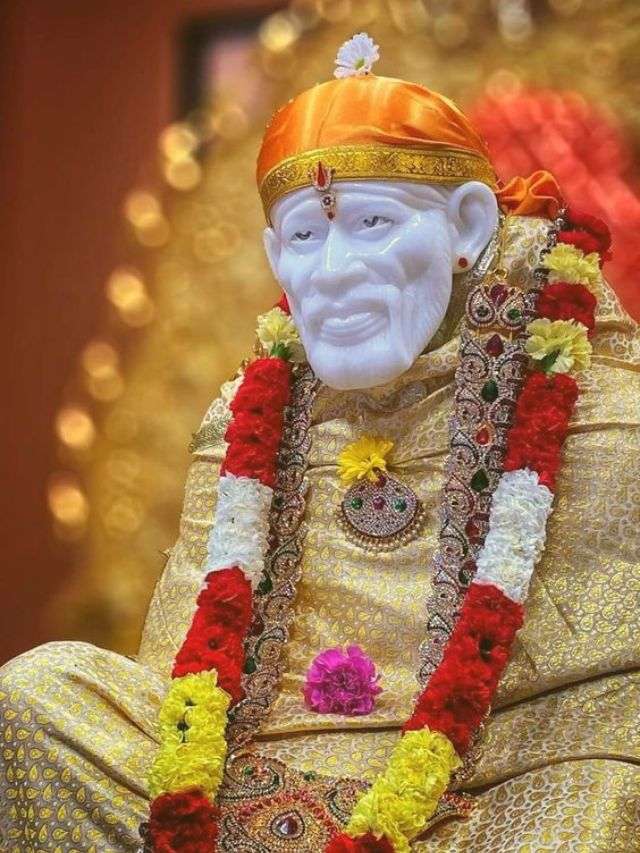Shirdi Sai Baba, the revered saint of the late 19th and early 20th centuries, attracted devotees from diverse religious and social backgrounds. While his core teachings emphasized the unity of all faiths and the omnipresence of the divine, the worship methods of Shirdi Sai Baba as varied and personal as the individuals who sought his blessings. Understanding these diverse practices provides insight into the profound love and devotion Baba inspired and the flexible, all-encompassing nature of his spiritual presence.
It’s crucial to understand that Sai Baba himself never prescribed a rigid set of rituals or dogmatic practices. His primary focus was on inner transformation through faith (Shraddha) and patience (Saburi). However, out of their deep love and reverence, devotees naturally gravitated towards various forms of worship, drawing from their own traditions and adapting them to their understanding of Sai Baba’s divinity. Baba, in his infinite compassion, accepted all expressions of devotion, often subtly guiding and blessing these diverse approaches.
One of the most prominent forms of worship was devotional singing (Bhajan and Kirtan). The air in Shirdi was often filled with the melodious sounds of hymns and devotional songs dedicated to Sai Baba. Devotees would gather, sing praises, and immerse themselves in the divine vibrations created by these musical offerings. This practice not only expressed their love and adoration but also fostered a sense of community and spiritual unity. Baba himself enjoyed these musical renditions and would often be seen listening with rapt attention. The tradition of singing bhajans and kirtans in Sai temples and gatherings continues to be a significant aspect of worship even today.
Another fundamental aspect of worship was offering prayers and performing Aarti. Aarti, a ritual of waving lighted lamps before the deity while chanting hymns, became a daily practice in Shirdi. Different Aartis were performed at various times of the day, each with its unique set of verses praising Sai Baba and invoking his blessings. Devotees would participate in these Aartis with immense devotion, considering it a direct way to connect with Baba’s divine energy. The tradition of performing these specific Aartis, like the Kakad Aarti (morning), Madhyan Aarti (noon), Dhup Aarti (evening), and Shej Aarti (night), is meticulously followed in Sai temples worldwide.
Seva (selfless service) was a core tenet of Sai Baba’s teachings and manifested as a significant form of worship. Devotees actively participated in various tasks in Shirdi, ranging from cleaning the temple premises and fetching water to cooking and serving food to fellow devotees and the needy. This selfless service was considered a direct offering to Baba, embodying his teachings of compassion and the eradication of ego. The spirit of Seva continues to be a vital part of Sai worship, with devotees volunteering their time and resources in Sai temples and charitable activities.
Offerings of flowers, fruits, and other symbolic items were also common. Devotees would bring these tokens of their love and reverence to Baba. Flowers, with their fragrance and beauty, symbolized purity and devotion. Fruits represented the offering of the self. Other items like incense, sandalwood paste, and sacred ash (Udi) were also offered with deep faith. Baba would accept these offerings with a gentle smile, acknowledging the devotee’s heartfelt sentiment. The practice of offering these symbolic items remains prevalent in Sai worship.
Reading and reciting sacred texts related to Sai Baba, particularly the Sai Satcharitra, became an integral part of worship. Devotees would read the stories of Baba’s life, miracles, and teachings with deep concentration and reverence. This practice was believed to bring them closer to Baba’s spiritual presence and provide guidance in their lives. The Parayana (continuous reading) of the Sai Satcharitra pdf over a specific period is a popular form of devotion.
Meditation and contemplation on Sai Baba’s form and teachings were also practiced by many. Devotees would sit in quiet contemplation, focusing their minds on Baba’s image, his words, and his divine qualities. This inward journey was seen as a way to connect with the inner Guru and experience Baba’s spiritual presence within themselves.
Visiting Shirdi and other Sai temples holds immense significance for devotees. The physical presence of Baba’s abode or places dedicated to him evokes a strong sense of his divine energy. Pilgrimages to Shirdi are undertaken with deep faith and devotion, with devotees seeking Baba’s blessings and experiencing the spiritual atmosphere of the holy place.
It is important to note that Sai Baba never discriminated based on the method of worship. He accepted all sincere expressions of love and devotion. Whether it was a simple prayer, a heartfelt song, or a selfless act of service, Baba recognized the underlying sincerity and blessed the devotee accordingly. His emphasis was always on the inner feeling and the purity of heart rather than the outward ritual.
Furthermore, Sai Baba often incorporated elements from both Hindu and Islamic traditions in his own life and teachings, and this was reflected in the worship offered to him. Devotees would address him with Hindu names and titles, while others would revere him as a Sufi saint. The celebration of Hindu festivals like Ram Navami and Gokulashtami alongside Islamic festivals like Eid in Shirdi exemplified this harmonious blend of traditions.
In conclusion, the worship methods of Shirdi Sai Baba were diverse and deeply personal, reflecting the individual love and devotion of his followers. From devotional singing and performing Aartis to selfless service, offering symbolic items, reading sacred texts, and engaging in meditation, devotees found numerous pathways to connect with the divine presence of Sai Baba. His acceptance of all sincere forms of worship underscores the universality of his teachings and the boundless compassion he held for all beings. The legacy of these diverse worship practices continues to thrive, uniting millions of devotees across the globe in their shared love and reverence for the beloved saint of Shirdi.


